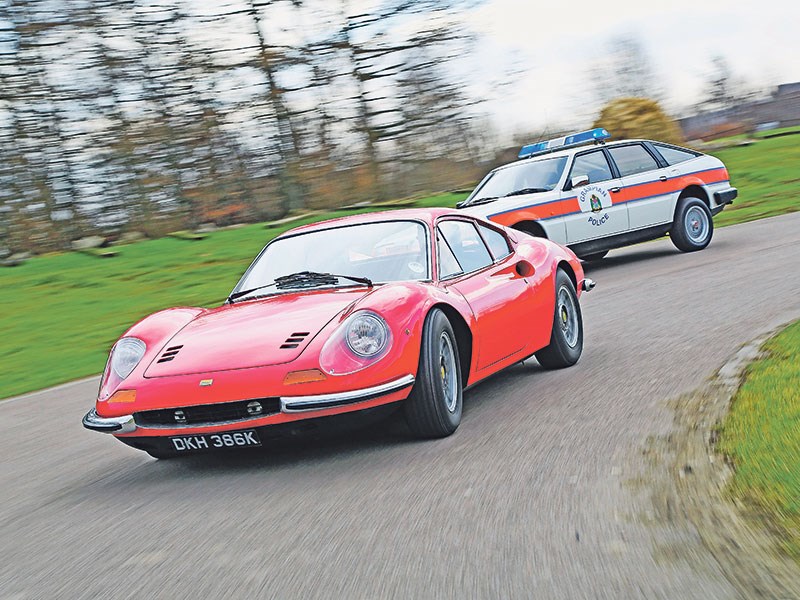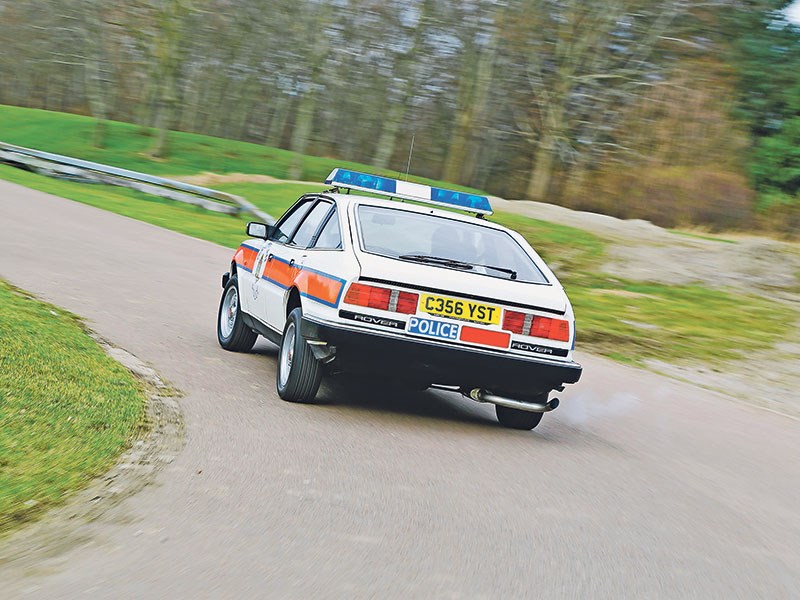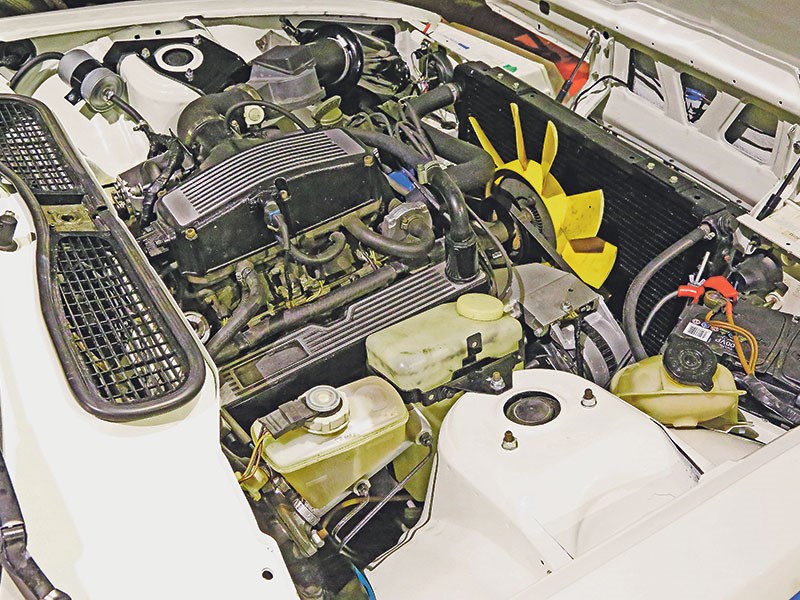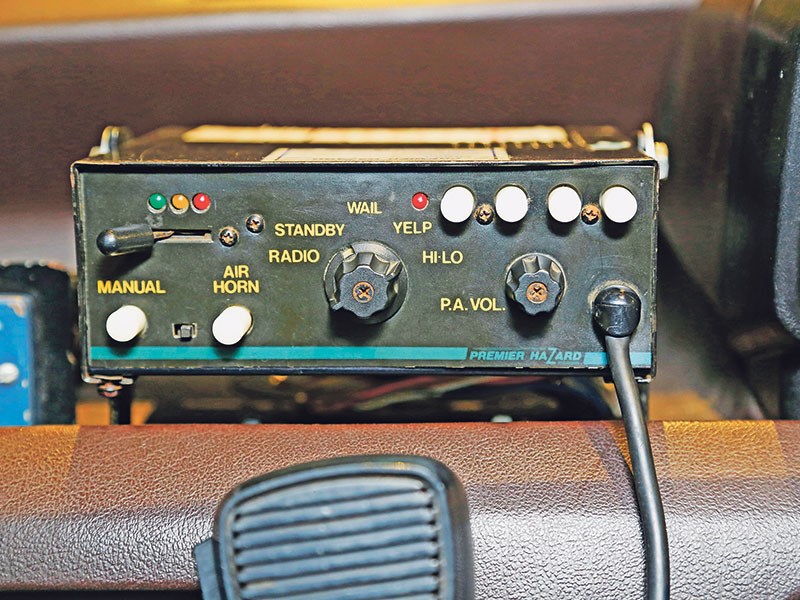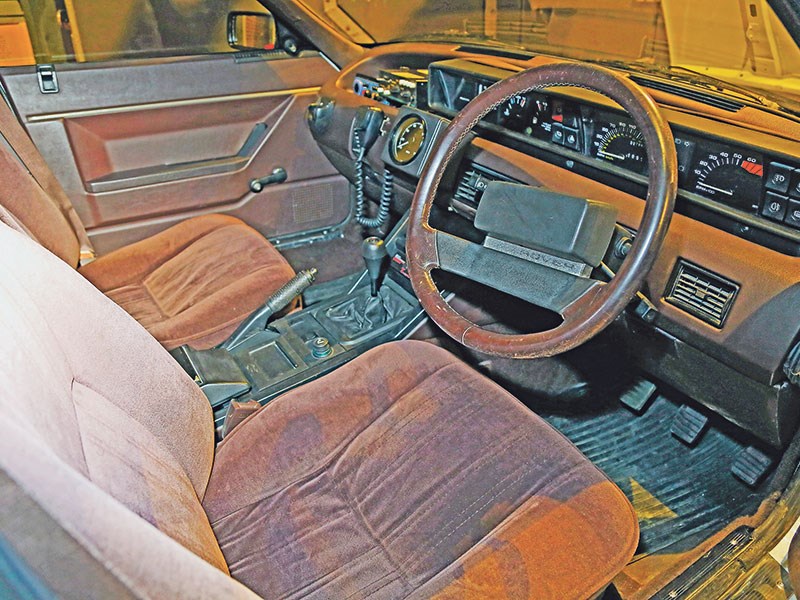An arresting sight - after setting an auction world record for the model last January, this Rover SD1 is back to doing what it does best: screeching around with its sirens screaming
You’re an up-to-no-good sort making a quick getaway from the oil-rich world of 1980s Aberdeen. The Ferrari you’re driving is ideal if you’re on the A90 and on the run from the law. But the law is easily capable of pulling three-figure speeds on eastern Scotland’s expressway, too. You see it before you hear it: a fuzzy blue flicker just visible at the edge of the horizon in your rear-view mirror. And every time you steal another glance, it looms ever larger.
Within seconds, the V8 boom of a jam-sandwich liveried Rover SD1 Vitesse is slicing through the dual-carriageway traffic alongside you, and the two fluorescent-clad custodians of the law inside beckon you to pull over. You ignore them.
Suddenly, a rolling road block hoves up ahead, and forces you to slow in a rather controlled and undramatic fashion. You could continue to run, but deep down, you know you’re caught. The game’s up and the Grampian Police SD1 chalks up another victory. Sorry, sunshine, you’re nicked!
A quarter-of-a-century later and it’s clear that C356 YST is still a police-liveried car that would give ramraiders and joyriders plenty to think about. After being treated to a restoration by SD1 specialist RobSport International – as detailed on 26 April in the TV series For the Love of Cars – it’s now more than up for a game of cops and robbers.
Plant your posterior into the brown velour of the driver’s seat and you immediately learn it’s going to be a comfy office to work in. The speedo, rev counter and switches for the hazard warning lights and heated rear window are all neatly contained within a single rectangle. You get a good view of it through a steering wheel with just two spokes, both mounted low to minimise obstructing your line of sight. The sharply-raked windscreen and thin pillars give the cabin a light, airy feel. It’s pure SD1 in all its cleverly-designed glory – right down to the passenger air vent that hid the steering wheel mount in left-hand drive models – but it’s also more ordinary than you might expect.
The police toys all live on the passenger side, including the five-setting siren and intercom system. Your fellow officer might be the one sounding the siren, but as driver you do get to operate the car’s crown jewel: the Lucas fuel injected version of Rover’s 3.5-litre V8. Fire it up and the noise is intimidating, like a mate who’d wallop someone on your behalf in a pub brawl.
It’s happy to dawdle along in traffic, rumbling at anything that gets in its way, but when the road in front opens up, a gentle prod immediately reminds you why the V8-engined versions of the SD1 were used to such devastating effective by the police in the 1980s. The grumble turns into an angry howl, delivering a dollop of mid-range torque to help you decide how quickly you’d like to catch the villains.
While it’s softly sprung ride and emphasis on straight-line grunt was clearly intended for use on dual carriageways and motorways, chuck a corner or two in its way and the SD1 doesn’t mind a bit. There’s a lot of lean as you plough towards the apex, and a light helping of understeer and gentle tyre squeal if you press on. Inevitably, the combination of a Rover V8, rear-wheel drive and relatively slim tyres mean the SD1 will treat you to some sideways showboating if you really muck about with it. But the supple set-up gives you plenty of warning and encourages you to use its wealth of speed with care.
It’s a hugely enjoyable and wonderfully effective reminder of how to do a performance saloon properly – and that’s before you order your companion to flick on the sirens and notify the control room you’re about to give chase. Suddenly, the V8 rumble is relegated to the subs’ bench as the wail of the two-tone takes over.
It isn’t hard to see why the boys in blue held on to their SD1s after production came to an end in 1987 – despite the coupé profile, it offers plenty of room for all the safety gear, and enough torque to propel all that clobber plus two burly coppers to three-figure speeds with ease.
The Liver Run: The SD1’s finest half-hour
Calling the successful transfer of a transplant organ across London on 8 May 1987 the SD1’s finest hour isn’t strictly accurate, because the Metropolitan Police had a mere 35 minutes to complete the 27-mile journey!
Two Rover SD1 3500s were used to transfer the donor liver from Junction 7 of the M11 motorway – where the officers had met an Essex Police Ford Granada which had transported the organ from Stansted Airport – to Cromwell Hospital in Kensington. To make matters worse, the aircraft that had ferried the organ down from Hull had been delayed by fog, cutting into the time the police had to carry it across London. It was critical that the liver arrived by 12.30pm and no later.
The SD1s immediately got up to speed on the life-saving journey, hitting speeds of upwards of 100mph on the drive down the M11 towards the capital. The two cars had been given permission to drive the wrong way around the Victoria Memorial roundabout, immediately in front of Buckingham Palace, in order to shave precious minutes off the journey, and the officers had to use all of their advanced driving skills to get through busy Friday lunchtime traffic safely without risking the safety of pedestrians and other drivers.
Despite having the assistance of motorcycle outriders on the capital’s streets, as well as fellow officers clearing junctions for the two cars, the run showed how a combination of the SD1s’ performance and the officers’ driving skills made the difference between life and death on London’s busiest streets.
The two SD1s arrived at Cromwell Hospital with just five minutes to spare, having averaged 44.6mph for the entire journey. The donor liver was delivered and the patient, Aliza Hillel, survived the operation – thanks in no small part to the Met officers and their SD1s achieving a seemingly impossible task.
The Grampian SD1’S journey to an auction record
This particular Rover SD1 Vitesse pursuit car was ordered in 1985 by Grampian Police, who used it to catch criminals and motoring transgressors driving at speed along the A90, particularly the dual-carriageway Stonehaven Bypass which had opened the previous year.
The force ordered its only SD1 with a manual gearbox – unusual for a police-spec vehicle – and omitted many of the luxuries that were fitted to civilian Vitesses in order to reduce weight and improve reliablility. As a result, the car has manual rather than electric windows, and does without the air-conditioning, central locking and electrically-operated sunroof that Vitesse owners are accustomed to.
After being decommissioned by the police in 1988, it passed through a series of owners, including one who partially restored the car but was unable to complete the project for personal reasons. Last year, it was bought by Love Productions, the television company behind For the Love of Cars. It was then restored by Ant Anstead and SD1 specialist RobSport International, who welded in new metal where it was needed, rebuilt the suspension and resprayed the car in its original police livery.
The car was sold, along with six others restored for the TV series, at Coys’ sale at the Autosport show at the NEC on 10 January. It changed hands for a total price of £11,213, including commission – a record price for a roadgoing variant of the SD1.
Grampian Transport Museum said it was worth paying that hefty price for the SD1 because it meant being able to bring the police car back to the part of Britain where it was originally on patrol, and it has already been used during the museum’s Emergency Vehicle Rides Day, which took place on 10 April.
Grampian Transport Museum director Mike Ward told CCW: ‘When we found out that it was up for sale, it was always our intention to try to bring this rare example back home. The hammer went down at £9750. It’s sure to be a fantastic addition to our collection.’
